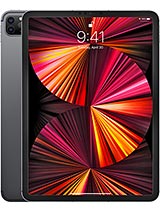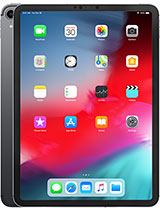M1 iPad Pro 11" - Honest Review after iPadOS 15.. By Max Tech
I’ve been reviewing Apple’s iPad Pro ever since their controversial what’s a computer ad in 2017 which basically sparked years of disappointment in the iPad Pros very limiting software, especially after the 2018 iPad Pro got a massive redesign and an extremely powerful A12X chip. In my review of that 11” iPad Pro over 2 and a half years ago, I said these words.. And now.. Here we are in 2021 with the new M1 iPad Pro that we’ve had in our hands for the past 3 weeks, and the story’s basically the same. The performance of this new iPad Pro is absolutely mind-boggling, especially when you compare it to the very best tablets on the market. They literally don’t stand a chance, and they won’t.. For years! But the problem comes when the iPadOS software is so limited that you literally can’t take advantage of all of that performance.
And with the newly revealed iPadOS 15, people are so upset and disappointed that they are literally returning their new M1 iPad Pros because Apple didn’t add the computer-like features that everyone was waiting for. And in my opinion, I think a lot of people are OVERREACTING, at least for the 11” iPad Pro, which I’m reviewing in this video, and I’ll explain my reasoning in just a minute. But first, I want to talk about why people are so upset, and to be honest, it’s kind of Apple’s fault. They basically baited everyone into having MASSIVE expectations for iPadOS 15 by first of all, putting the exact same chip from the incredible new M1 Macs into the new iPad Pro, as well as allowing you to get up to 16GB of RAM which was unheard of on an iPad Pro since the previous model only had 6 gigs. And as we all recently found out, the previous iPadOS 14 wouldn’t even allow apps to use more than 5GB of that 16 gig limit on the new iPad Pro, and we proved this in our 8GB vs 16GB iPad Pro comparison video, where there was basically no differences.
And the worst part is that the previous A12Z iPad Pro was still overpowered for iPadOS 14, so the fact that Apple gave the new model the M1 chip with up to 16gigs of RAM basically baited everyone into thinking Apple was gonna finally turn the iPad Pro into a real computer replacement by removing artificial software limitations and adding Pro apps like Final Cut and Logic, but of course, that didn’t happen. So here’s the main question we need to answer, why did Apple still end up giving the iPad Pro that crazy M1 chip if they didn’t have plans to completely revolutionize the software? Well, not everyone realizes this, but the A12Z chip from the previous iPad Pro had almost the same exact chip layout as the M1, 4 performance cores, 4 efficiency cores, 8 graphics cores, machine learning accelerators and a Neural Engine. So in reality, the M1 chip isn’t THAT groundbreaking or special, it’s basically just a new version of A12Z, except that it’s built on TSMC’s more efficient 5nm transistors instead of the old 7nm ones. So if you think about it, Apple could’ve easily gone with their previous trend and named the chip the A14X like everyone was expecting them to, and we even expected the A14X and M1 to have basically the same performance, since they would’ve had the same layout. So here’s the next question we have to answer: Why did Apple choose to ditch the A14X trend and literally just take the M1 chip out of the Mac and throw it into the iPad Pro? Well, it actually makes much more sense than you think, at least for Apple.
First of all, the M1 chip is basically the mascot or the symbol of the Apple Silicon transition, since they’ve literally packed that chip into half of their entire Mac lineup, so Apple’s goal is to essentially make the M1 chip go VIRAL, so that their Apple Silicon transition goes viral. And what better way to do that than to stick the M1 in yet another popular Apple product. Reason number 2 is that the M1 chip has an awesome reputation among the Mac crowd for being incredibly powerful while using very little power, so having that chip in the iPad Pro makes it seem a whole lot more Pro than ever before. Reason number 3 is that since the M1 chip already comes with a Thunderbolt controller built-in, it automatically added support for the iPad Pros new Thunderbolt port, yet again making it seem much more Pro. And Reason number 4 is that believe it not, the M1 chip is actually MUCH cheaper per unit than if Apple made a slightly different A14X chip just for the iPad Pro.
Because the M1 is literally the only option for the new Macbook Air, MacBook Pro, Mac Mini, 24” iMac and the iPad Pro, Apple can mass manufacture that one chip and save a lot of cash compared to if they made a specific chip just for the iPad Pro. So basically, putting the M1 chip in the iPad Pro absolutely made the most sense financially for Apple, but the problem is that it caused extremely high expectations, and a lot of people were let down, even to the point of returning their iPad Pros. And don’t get me wrong, I’m not blaming you guys for having huge expectations because Apple kind of put themselves in a box. And if you wanna find out how they did that, click that subscribe button below because Max is gonna go in-depth with Apple’s dilemma in his 12.9” M1 iPad Pro review going up tomorrow, but for this review, I’m gonna look at the 11” model for what it actually is. The truth is that the 11” M1 iPad Pro for $800 is a MUCH better value than the previous iPad Pro, which we already were recommending because of it’s exclusive features compared to the lower-end iPads.
In fact, we still recommended the A12Z iPad Pro when the brand new $600 iPad Air 4 came out late last year because in reality, you truly did get a lot for the extra $200. But now, with the M1 iPad Pro, the list of advantages over the Air is so huge that we literally told people NOT to buy the iPad Air in our recent iPad Buyer’s Guide video because at $600, it’s simply too expensive for what you get compared to spending $200 more for the M1 Pro. For example, the Pro gets a 120hz ProMotion display with 600 nits of brightness instead of 500, which allows it to support HDR video. It also gets extra camera features including an ultra-wide on the back, a flash, a LIDAR scanner for 3D modelling and a much better 12MP ultrawide selfie camera with the new center stage feature. It gets much better quad-stereo speakers instead of dual-stereo speakers on the Air, it gets much better studio-quality microphones, it gets optional 5G connectivity, it gets the Thunderbolt port compared to a pretty limited USB-C port, it gets much faster SSD Write speeds, it gets 8GB of RAM instead of 4 on the Air, it gets 128GB of storage instead of 64GB, and of course it gets the M1 Chip compared to the A14 on the Air.
And taking a look at all of the benchmarks that we ran, it’s faster in everything from the single-core performance which gives it a snappier web-browsing experience. It’s much faster in terms of multi-core performance, and it was over twice as fast in terms of real-world graphics performance. So the point that I’m trying to make is that if you get rid of all the high expectations and just look at the M1 iPad Pro compared to the last one, it’s definitely a nice improvement! The 11” iPad Pro is now further cemented as the best tablet ever made, with performance that’ll run even the best apps that’ll be available years from now, it’s got incredibly high-quality speakers and microphones, it’s got a killer 120hz display, even without the Mini-LED tech, it’s got the best stylus experience you can get with the Apple pencil, and the software works incredibly well, even if it doesn’t come with the MacBook-replacing features that we were all hoping for. So I’ve gotta say that this is one of the best times to buy an iPad Pro, because we’ve basically just reached the peak of iPad hardware, and if by some chance Apple decides to fix the software issues within the next couple of years, or even the next few years, this M1 iPad Pro will be ready for it. And the reason I say it’s reached peak hardware is because the M1 chip is so powerful that it’s hitting the limits of the thin iPad Pros passive cooling system.
So when the next iPad Pro comes out, probably fall of 2022, it’ll likely get the M2 chip, which honestly won’t be that big of an improvement in the iPad which isn’t limited by the amount of RAM or display outputs. And as far as everything else like the design, Face ID, all of the cameras, the speakers, the microphones, the Thunderbolt port, the keyboard case support with the smart connector, all of the magnets, and everything else to do with hardware.. They’ve basically all reached their peak, and they make using the iPad Pro as a tablet the best experience out there in terms of everything from media consumption, note-taking, drawing, gaming, and common computer use. The only issue is that the 2018 iPad Pro was so far ahead of it’s time that even today, it still checks all of those boxes, not quite as well as the new M1 model, but it still does. So if you own a 2018 or 2020 iPad Pro, don’t bother upgrading unless you’re doing something specific that you think would make a big difference for you on the new M1 iPad Pro, like for example, high-end gaming, since the M1 chip stays incredibly cool compared to the A12Z chip which overheats like crazy in Genshin Impact.
Or maybe you do a ton of web conferencing and the new center stage feature with the ultrawide camera is a huge deal for you. Or maybe you want to take advantage of the Thunderbolt port, like how we were able to hook up this OWC Thunderbolt dock meant for M1 Macs, which basically turns 1 Thunderbolt port into 3, and as you can see, it actually works great on the new iPad Pro! But other than those couple of improvements, the new M1 iPad Pro isn’t really THAT groundbreaking or different compared to the 2018 and 2020 models. And with that said, there is actually one piece of hardware on the 11” M1 iPad Pro that hasn’t reached its peak, and that is, of course, the regular LCD display compared to the 12.9” model’s Mini-LED. And in my personal opinion, I think Apple’s gonna give that new display to the 11” iPad Pro next year, so they’ll have a good excuse to bump up the base price by 100 bucks to $900 for the base model. So if you don’t already have a 2018 or newer iPad Pro, and you’re thinking about getting the M1, you basically have two options.
You can wait a full year and a half with the hopes of getting that Mini-LED display on the 11” model for probably $900, or you can buy the current model right now for $800 and enjoy it for the entire time that you would have otherwise been waiting. But either way, the M1 iPad Pro is definitely the best tablet in the world, with hardware that’s so good that it’s basically future-proof, so if Apple ever does fix the software and make it more of a laptop replacement, you’ll be ready for it. But as it stands today, iPadOS 15 is extremely disappointing compared to how good the iPad Pro hardware is, and that’s exactly what Max is gonna talk about in his review of the 12.9” Mini-LED model, so if you’re not already subscribed, click that circle above so you don’t miss out on his review. Thanks for watching, and we’ll see you in tomorrow’s video!.
Source : Max Tech



























